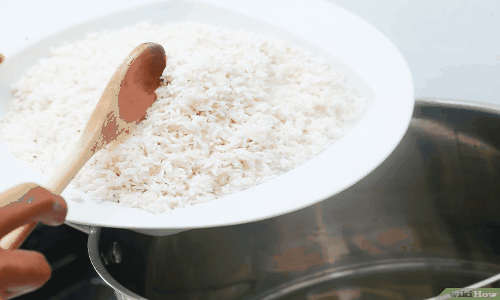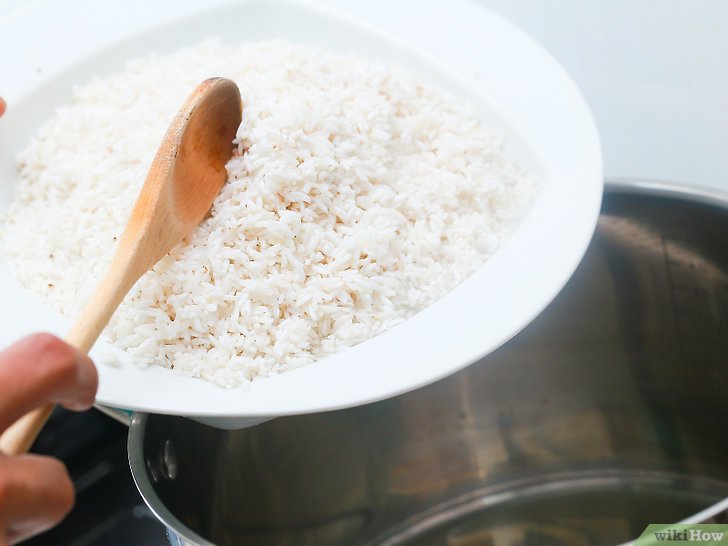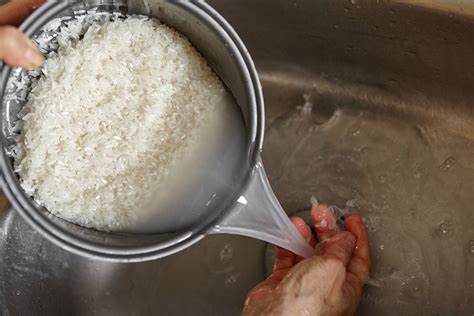Advertisements
Discovering how to wash rice properly can transform the flavor and texture of your meals.
Advertisements
This simple and often overlooked step makes all the difference in the final result, ensuring a dish that is more fluffy, uniform and with that special touch that impresses anyone. 🥢

Many people don't know this, but the way rice is washed directly influences the removal of excess starch, impurities and even residues that can alter the taste of your recipe.
However, the secret is not just to quickly rinse the rice: there is a technique that takes the preparation to another level and that can be applied to any type of rice, from white to brown. 🍚
Advertisements
Whether it’s for basic everyday rice or more elaborate dishes, understanding this process is essential. Here, we’ll show you step by step how to wash rice the right way and explain why this has such an impact on the final result.
Keep following and discover how to improve your culinary skills in a practical and efficient way!

Why does washing rice make such a difference in flavor?
If you always thought that washing rice before cooking was just a boring and unnecessary step, let me tell you: this practice makes all the difference in the flavor and texture of your dish. 🥢 And the reason is quite simple. When you wash rice, you are removing the excess starch that accumulates on the surface of the grains during processing. This starch, if not removed, can turn your rice into something stickier and soggier than it should be. And nobody wants that, right?
In addition, washing rice helps to eliminate unwanted residues, such as dirt and impurities that may come from storage and transportation. Oh, and there's more: depending on the origin of the rice, there may even be traces of talc or other agents used to polish the grains. So, washing rice is not just a matter of taste, but also of health. 🤔
Now that you know why washing rice is so important, let's learn the right way to do it and ensure that you get fluffy, perfect rice every time. Let's go!
The foolproof step-by-step guide to washing rice correctly
1. Choose the ideal container
To start, choose a container that is large enough to stir the rice without overflowing. This could be a bowl, a pan, or even a colander. The important thing is that you have enough space to work the rice with your hands and that you can completely cover it with water.
Extra tip: if you use a transparent bowl, you can even see how the water becomes cloudy during the washing process. This is a sign that the excess starch is being removed. 😉
2. Add water and mix gently.
Now it’s time to add water. Fill the container until all the grains are submerged. Using your hands, stir the rice in gentle, circular motions. This step is crucial because this is where the starch starts to release. You don’t need to use force; the goal is to move the grains around so that they rub together gently.
Repeat this mixing process for about 30 seconds and get ready to see the magic happen!
3. Rinse until the water runs clear
After mixing, it’s time to drain the cloudy water. Use a colander or hold the rice carefully so you don’t lose any grains. Then add clean water and repeat the mixing process. The key here is patience: you need to repeat the rinsing until the water is completely clear.
Typically, three or four washes are enough, but this may vary depending on the type of rice. For rices like Japanese rice, which are very starchy, you may need to wash more often. And for simpler rices, like parboiled rice, once or twice is enough. 🧼
The different types of rice and their particularities when washing
Traditional white rice
White rice is the most common type in our homes and also the one that requires the most attention when washing. This is because it is polished during the manufacturing process, which creates a layer of starch on the surface. Wash it carefully and repeat the rinse until the water is clear to ensure that the rice is fluffy and perfect.
Brown rice
Brown rice is a little different. It keeps its husk, which makes it more nutritious and has less loose starch on the surface. Because of this, you don’t need to wash it as often as you would white rice. One or two washes are enough to remove any residue or dirt.
Japanese or sushi rice
This type of rice is known for being sticky, which is great for recipes like sushi, but it can be a challenge if you don't wash it properly. The secret here is to wash it well to remove most of the starch, but not overdo it. This ensures that it is sticky, but not soggy. 🍣
Parboiled rice
Parboiled rice is pre-cooked during processing, which means it has already undergone a sort of “cleaning” before reaching your table. Therefore, it does not need to be washed frequently. One or two rinses of water are enough to ensure that it is ready for cooking.

Extra tips to make your rice even tastier
1. Soak the rice
After washing, why not soak the rice for 15 to 30 minutes before cooking? This helps the grains absorb the water, which improves the texture and ensures more even cooking. This tip is especially useful for rices like brown and Japanese rice.
2. Use seasonings in the cooking water
How about giving your rice a special touch with simple seasonings? Add garlic, onion, bay leaves or even a little olive oil to the cooking water to enhance the flavor. You can also use vegetable or chicken broth instead of water for an even tastier result. 🧄🍃
3. Invest in good cooking
Washing the rice is important, but the way you cook it also makes a difference. Use the correct proportion of water for each type of rice and control the heat to prevent it from burning or sticking to the bottom of the pan. Oh, and never stir the rice while it’s cooking – this can break the grains and compromise the texture.
Common Mistakes to Avoid When Washing Rice
1. Washing too quickly
If you’re in a hurry, you might end up washing the rice in a rush. This won’t remove all the starch and impurities, and the end result could be heavier, stickier rice. So, take a deep breath and take your time with this process, okay? ✨
2. Overdoing it
Washing should be done gently. If you scrub the grains too hard, you can end up breaking them and leaving the rice with an uneven texture. The key is to use smooth, consistent movements. Think of it as a light dance in the kitchen. 💃
3. Does not drain well
After rinsing, drain the rice completely before cooking. If there’s too much water in the rice, the ratio of liquid to rice in the pot will be off, which can make the rice too mushy. Use a colander to make sure the rice is completely dry before adding it to the pot.
Now that you know all the secrets to washing rice the right way, just put the tips into practice and surprise everyone with delicious and impeccable recipes. Ready to cook? 🍚✨

Conclusion
It's no exaggeration to conclude that the way you wash your rice can transform the flavor and quality of your recipes. 🥄 This essential step in cooking is often overlooked, but now you know that taking a few extra minutes to wash your rice properly can make all the difference. 🌟 By removing excess starch, dirt, or impurities, you ensure looser, tastier grains with a perfect texture. In addition, this practice values the care and dedication we put into each meal, making the dishes even more special. 🍛
Whether you’re preparing your everyday fluffy rice or a more elaborate dish, like risotto or sushi, the washing technique is part of the secret to achieving mouth-watering results. 🔑 So, be sure to put into practice what you learned today. Share these tips with your friends and family and take your recipes to the next level! 🚀 After all, cooking is more than a task, it’s a way of spreading love and care. ❤️ Try it and see the difference that well-washed rice makes in your meals!
Take advantage of our free tips and keep up to date with our latest news to transform your kitchen! 🧑🍳

